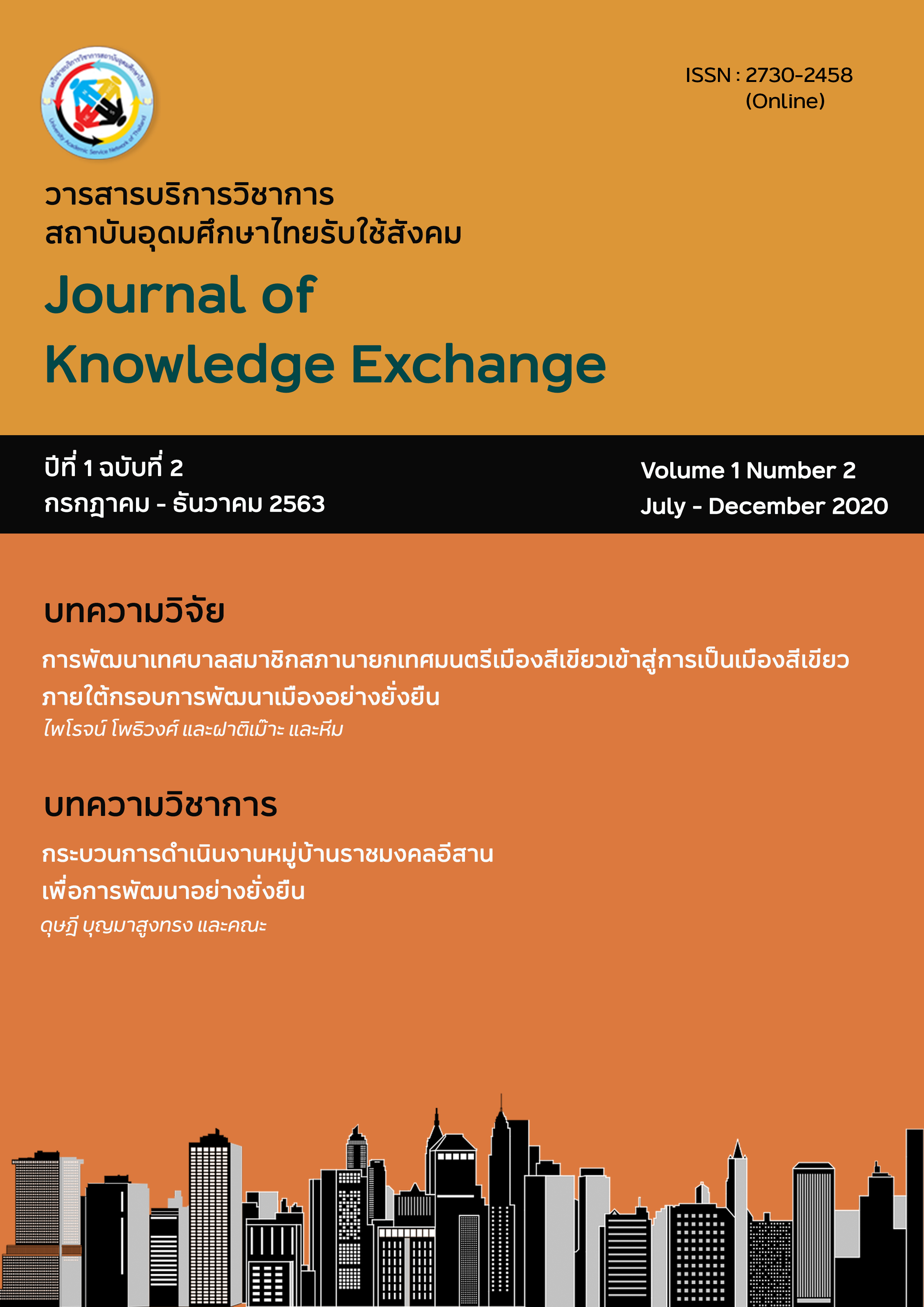The operation process of Rajamangala Isan village for sustainable development.
Keywords:
หมู่บ้านราชมงคลอีสาน , การพัฒนาชุมชน , วิธีการมีส่วนร่วม , ความยั่งยืน, Rajamankala Isan village , Community development, Participatory approach, SustainabilityAbstract
The Rajamangala village is one of an academic service project for building a sustainable society. An achievement was produced by the efforts of the RMUTI staffs focusing on integration of variety knowledge and blending with local knowledge for developing and enhancing the living quality of communities and sustainable societies. The operation process consists of 5 steps: 1) teaching and training people in the community 2) finding the needs of the community 3) conducting the village development 4) following and evaluating performances of the community 5) taking the results (from the previous step) to adjust as well as to develop the whole process of the academic service project.
The operation process mentioned above is an important tool, producing that the development of the Rajamangala village is both permanent and sustainable. The village established in 2011. Currently, 6 model villages are Bann Sala in Nakornratchasima, Baan Na Chuak, Baan Non Hau Chang in Sakonnakorn, Baan Koke Si in Khonkhean, Baan Dong Man and Baan Sala in Surin. The 6 model villages have obviously been developed in many areas such as economy, society, environment and culture. In addition, the villages also act as a role model for other villages by establishing learning centers and being mentors. Key Word : Operation process , Isan Rajamangala village, development.
References
เกศินี ประทุมสุวรรณ. ดวงกมล คงประเสริฐอมร และพีรพัฒน์ พ้นศิริ. (2562) การประยุกต์ใช้ปรัชญาเศรษฐกิจพอเพียงขององค์กรปกครองส่วนท้องถิ่นสู่การขับเคลื่อนประเทศไทย 4.0 โดยกลไกประชารัฐ : กรณีศึกษาชุมชนท้องถิ่นจังหวัดนครปฐม. วารสารวิจัยแสงอีสาน มหาวิทยาลัยมหามกุฎราชวิทยาลัย วิทยาเขตอีสาน. ปีที่ 16 ฉบับที่ 2 กรกฏาคม-ธันวาคม 2562)
คมสัน รัตนสิมากูล. (2560). การขัดเกลาทางความคิดเกี่ยวกับการนำหลักปรัชญาของเศรษฐกิจพอเพียงไปใช้อย่างยั่งยืนในกลุ่มสาขาอาชีพหลักของจังหวัดเชียงราย : กรณีศึกษาในมิติของการสื่อสาร. วารสารวิจัยราชภัฎพระนคร สาขามนุษย์ศาสตร์และสังคมศาสตร์. ปีที่ 11 ฉบับที่ 1 (มกราคม-มิถุนายน 2559)
มณเฑียร บุญช้างเผือก (2550). การพัฒนารูปแบบเศรษฐกิจพอเพียงที่สอดคล้องกับวิถีชีวิตของชุมชนบ้านป่าสักงาม ตำบลลวงเหนือ อำเภอดอยสะเก็ด จังหงัดเชียงใหม่. สำนักงานกองทุนสนับสนุนการวิจัย.
สำนักงานคณะกรรมการพิเศษเพื่อประสานงานโครงการอันเนื่องมาจากพระราชดำริ .2563. กษัตริย์นักพัฒนานักพัฒนา พระบาทสมเด็จพระเจ้าอยู่หัว กับแนวทางการสร้างความสมดุลในการพัฒนา. [ออนไลน์] ได้จาก: http://www.rdpb.go.th/th
สุเมธ ตันติเวชกุล. (2544). เศรษฐกิจพอเพียงตามแนวพระราชดำริในใต้เบื้องพระยุคลบาท. กรุงเทพฯ: สำนักพิมพ์มติชน.



